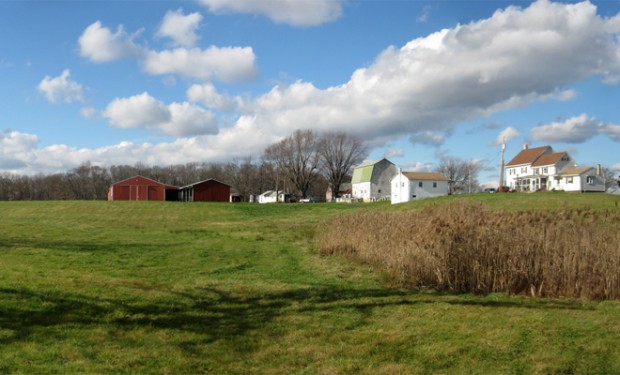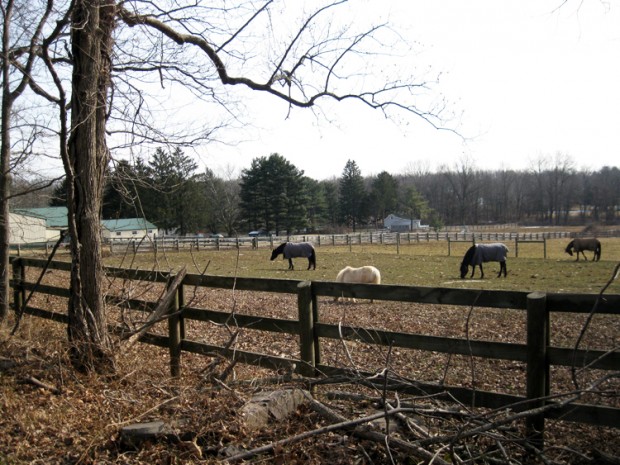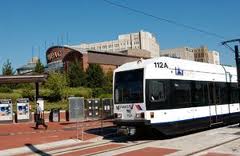New Jersey Future Blog
Preserving Land through Market Real Estate Transactions: Nine Approaches and Four Success Stories
May 1st, 2012 by Chris Sturm
Innovative, affordable efforts to create an alternative to sprawl development are illustrated in New Jersey Future’s new report, “Preserving Land through Compact Growth: Case Studies of Noncontiguous Clustering in New Jersey,” coauthored by New Jersey Future Intern Nicole Heater and Senior Director of State Policy Chris Sturm.
The report profiles the use of “noncontiguous clustering” ordinances by nine municipalities, and highlights success stories in four of these communities, where landowners and developers have taken advantage of the option to build more compactly on some sites, while preserving farmland and open space on others.
“The case studies give the details of effective master plans and ordinances, and also show readers the landscapes and land uses that many of the townships seek to preserve,” explains co-author Nicole Heater, who traveled throughout New Jersey photographing the physical character of the townships and the built projects that utilized noncontiguous cluster. “When authorized as a development option, the tool can collectively benefit landowners, developers and municipalities,” Heater continued.
“The report demonstrates that noncontiguous clustering has tremendous potential for municipalities seeking to preserve land and strengthen neighborhoods on a tight budget … however, in the 16 years since it has been available, only four projects have been completed.”
Co-author Chris Sturm added, “The report demonstrates that noncontiguous clustering has tremendous potential for municipalities seeking to preserve land and strengthen neighborhoods on a tight budget. We are delighted to share how nine communities have used this clever approach.”
However, she added, “In the 16 years since the noncontiguous clustering tool has been available, only four projects have been completed.” She noted that New Jersey Future has been working with colleague organizations to make noncontiguous clustering an easier to use and more powerful planning tool, and will be pursuing amendments to the planning statute.
The report focuses on the nine townships that have adopted noncontiguous clustering ordinances: Delaware, Hillsborough, Hopewell (Mercer County), Middle, Monroe, North Hanover, Ocean, Plainsboro and Robbinsville. Each case study includes photographs capturing the character of the natural and built environment; a map of the project area or municipality; and a summary of the key features of the master plan, ordinance(s) and implementing projects, if available, with links to supporting documents.
Download: Preserving Land through Compact Growth: Case Studies of Noncontiguous Clustering in New Jersey (PDF)



























I’m concerned about the overpopulation and road hazards that are on going in Lakewood, N.J. I was born in Lakewood, N.J., in 1951. It was a nice small farm town with roads easy to drive through. Today the roads are dangerously overcrowded, accidents and injury occur daily and people are building houses on small lots and condos with no end in sight. This is a deadly situation — it’s getting to be like Manhattan to drive. How long will this go on? People are geting killed on the overcrowded roadways. Quality of life is greatly diminished. How is this allowed to go on?
Perhaps consider joining your local planning board or even participate as citizen to address these concerns leveraging some of these NJF documented strategies and advance a sustainable master plan element. Also see the award winning sustainable jersey certification program for communities.